The Incredible Art of Transformation in Nick Cave’s Soundsuits
American fashion designer, textile, and performance artist Nick Cave has an uncanny ability to weave ordinary detritus, from sticks to stuffed-sock monkey dolls, crocheted doilies, repurposed sweaters, and dyed hair into the most fantastical, transformative costumes. The artist is best-known for his intricate, elaborate ‘Soundsuits’, which are designed to be both seen and heard, giving their wearers a curious, expressive freedom. These indulgent costumes have been the starting point for exhibitions, large-scale performances and community-led ventures, showcasing the artist’s uncanny ability to weave a strange and compelling magic out of our throwaway culture. But under their fabulous, celebratory surface, Cave’s costumes ask deeper, serious questions about racial prejudice and social exclusion, arguing that everyone has the right to be seen, heard and understood.
Cave was born in Fulton, Missouri in 1959 and grew up as one of seven brothers. From a young age, sewing was always a part of his upbringing; Cave’s grandmother was a quilter, while two of his aunts worked as seamstresses. As a young adult Cave found sewing gave him freedom to transform his older brothers’ hand-me-down clothing into one-off, unique garments. He says, “If I didn’t want to be in my brother’s jacket, I’d take off the sleeves and replace it with plaid material. I was already in that process of cutting and putting things back together and finding a new vocabulary.”
Cave went on to study performance, sculpture and dance at Kansas City Art Institute in Missouri, which was where he first learned to sew. In the summers, he trained as a dancer with the Alvin Ailey Dance group. Already he had divergent interests which would later feed into the artist he was to become. After studying an MFA at Cranbrook Academy of Art, Cave pursued a career in fashion, before re-directing his interest towards the intersection between art, costume, and performance.
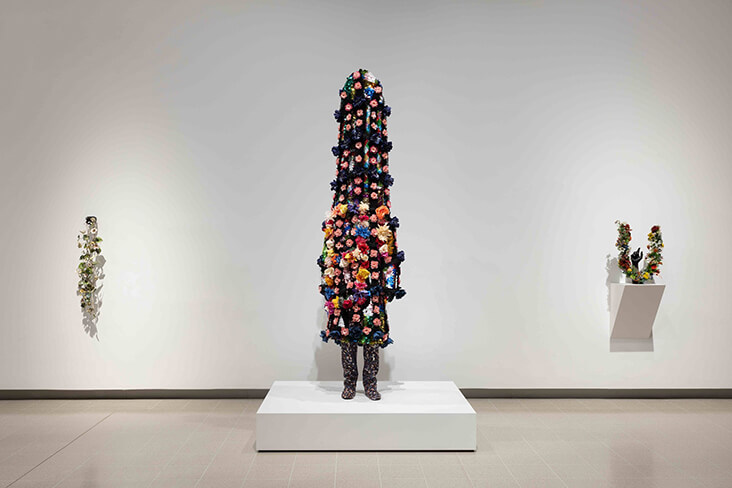
Installation View of Nick Cave, Soundsuit 9_29 (2022) at Hayward Gallery, In the Black Fantastic, 2022
It was in the early 1990s that Cave first began making his Soundsuits, which, he recalls, came out of a particularly difficult period of socio-political turmoil. It was after hearing about the beating of Rodney King by the Los Angeles Police Department in 1991 that Cave felt compelled to respond in some way to the collective feelings of fear amongst African American communities. He says, “It was an almost inflammatory response. I felt like my identity and who I was as a human being was up for question. I felt like that could have been me. Once that incident occurred, I was existing very differently in the world. So many things were going through my head: How do I exist in a place that sees me as a threat?”
Cave’s response came from a surprisingly humble beginning – one day while sitting in the park he began gathering sticks from Grant Park, near where he was teaching in the undergraduate department at the School of the Art Institute of Chicago. He had the idea that the sticks could form a kind of protective armour, to shield or disguise himself from the outside world. While piecing together these sticks into a costume, Cave was struck by the alarming noises they made during movement, which, he discovered, could immediately command attention. As a result, he says, he was able to reinvent “something that was discarded, dismissed, viewed as less. And it became the catalyst for the first Soundsuit.”
Over time, Cave’s Soundsuits have become increasingly sophisticated, colourful and complex, with stunningly detailed areas of sewing, patchwork and embroidery, along with a rich variety of textures, surfaces and colours, including crystals, pelts of hair, beads and stuffed toys. Much like the deeply spiritual costumes and masks worn by African tribes, they reach out far beyond the confines of the human body, to create ethereal, otherworldly beings. Moving beyond this initial, protective concept, his costumes are now deeply powerful means of self-expression, allowing the wearer to transcend the stifling oppressions or expectations the outside world places on race, sexuality and gender. During his transformative performances, collaborative ‘community lab’ projects that involve music, dance, and community spirit, or vast, sprawling installations that address racism directly and indirectly, Cave stages Shaman-like rituals with a compelling, mystical wonder. He asks participants and viewers to question our prescribed attitudes towards one another, and opens up magical, theatrical new worlds where individuals can look, move, dance, and be seen without fear of judgement or repercussion.





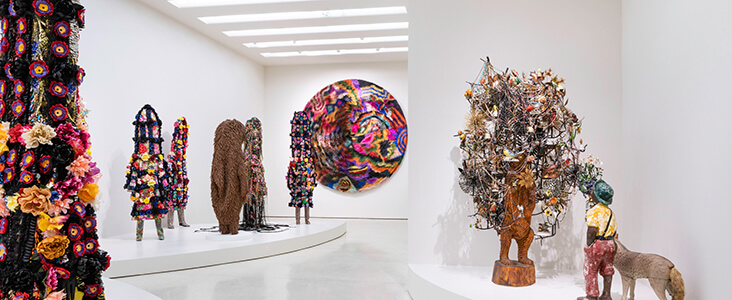
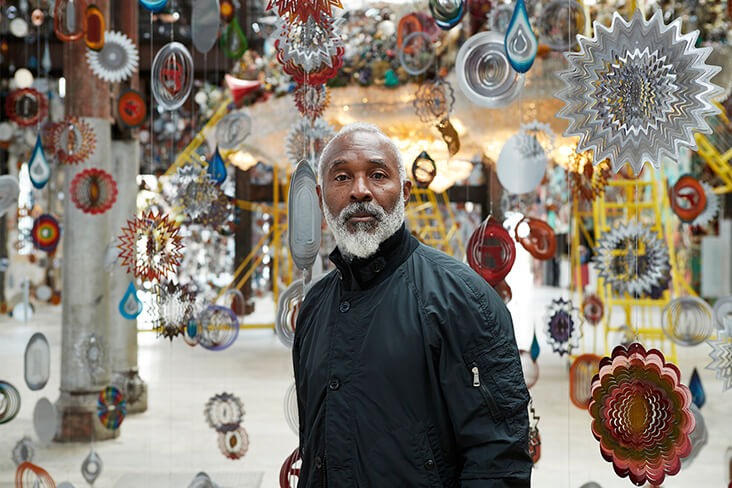
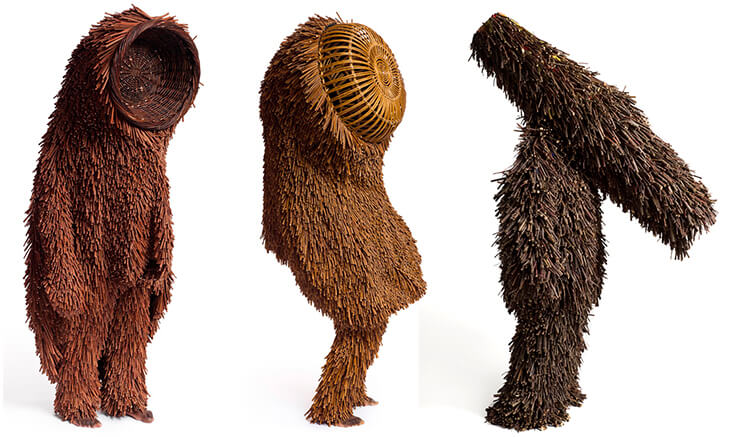
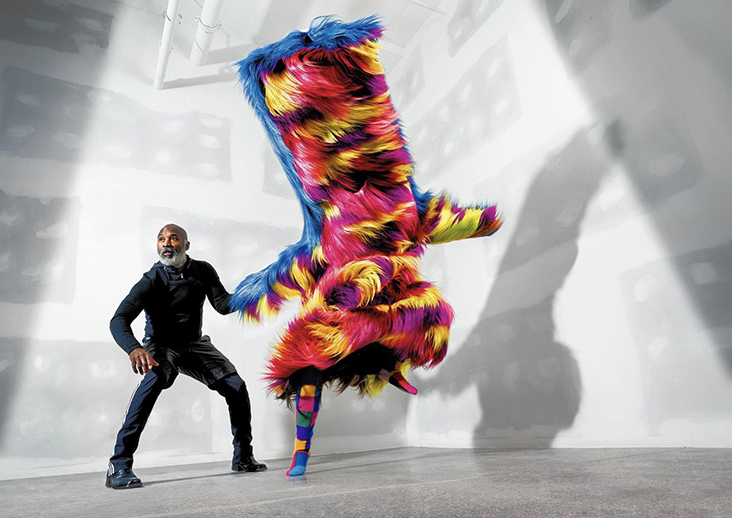
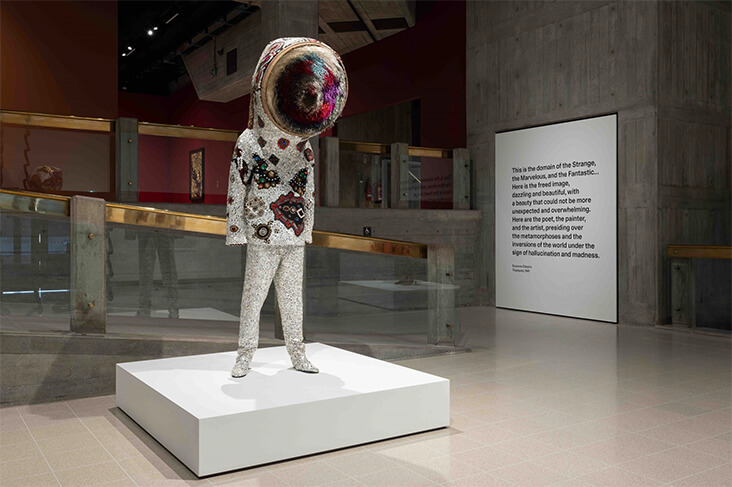
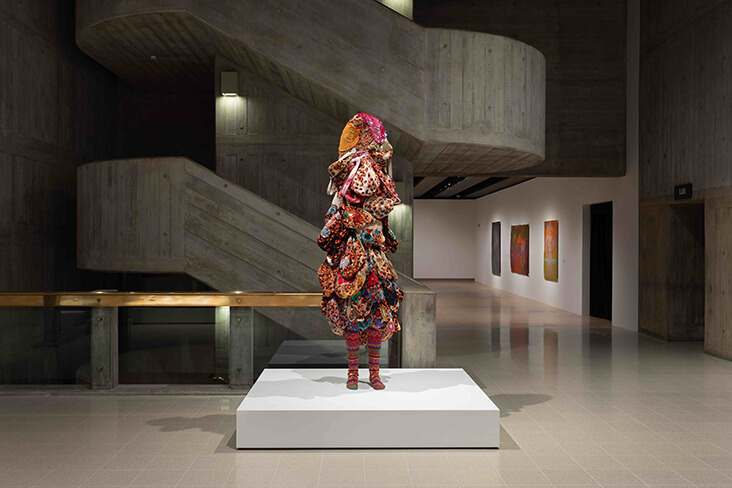
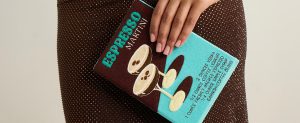

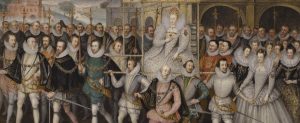
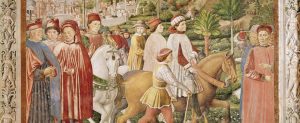
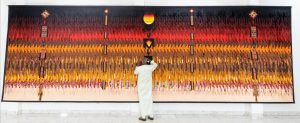


























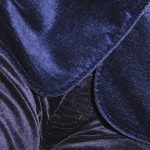
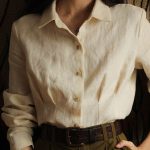

2 Comments
Vicki Lang
What a unique artist. Love his visions. The use of color and material.
Myrna Seale
Another great article, Rosie!
In the early 90s, Nick did a trunk show at a women’s boutique in my city. I met him and bought several pieces of his clothing – which I’ve kept – even though I can no longer wear it. Just can’t part with it!
This part of his artistic journey is seldom mentioned so was very happy to read that background.
He was deightful!